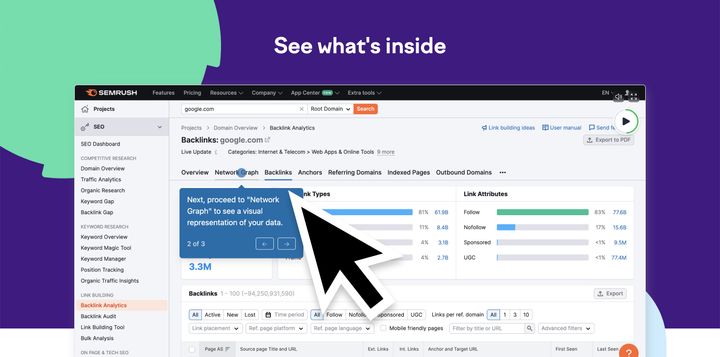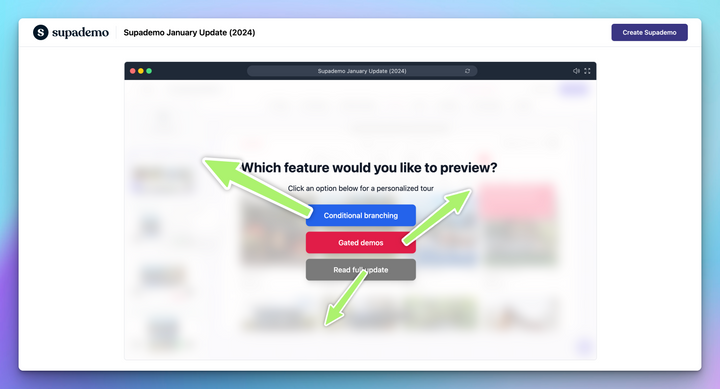In today's ever-changing business landscape, small businesses face numerous challenges, including shifts in consumer behavior and economic fluctuations. To navigate these uncertainties successfully, it's crucial to develop a robust lead generation strategy. Having a solid plan in place allows businesses to adapt to changes swiftly and continue attracting potential customers, even when traditional methods may no longer be effective.
In this comprehensive guide, we will explore the process of building an effective lead generation funnel for your business. By understanding the stages of the funnel and implementing the right strategies, you can attract, engage, and convert leads into loyal customers. While every business has unique lead generation strategies, the insights and ideas shared here will inspire you to take your lead generation efforts to new heights.
What is a Lead Generation Funnel?
A lead generation funnel is a systematic process that aims to capture the attention of potential customers and guide them through different stages until they convert into paying customers. Visualize the funnel as a fishing net, where you start by identifying the type of fish you want to catch, find the right bait (lead magnet) to attract them, and then carefully guide them through the funnel until they make a purchase. The lead generation funnel typically consists of three main stages: top-of-funnel (TOFU), mid-funnel (MOFU), and bottom-funnel (BOFU).
The Stages of a Lead Generation Funnel
Awareness (TOFU): Attracting Potential Customers
The first stage of the funnel is all about creating awareness and capturing the attention of potential customers. This is where you leverage various marketing strategies, such as search engine optimization (SEO), paid advertising, and content marketing, to make your brand visible to your target audience. By understanding your customers' preferences and interests, you can tailor your content to resonate with them and draw them into your funnel.
Interest (MOFU): Engaging Potential Customers
Once you have captured the attention of potential customers, the next step is to engage them and generate interest in your brand. This stage involves showcasing your company's value, highlighting the benefits of your products or services, and building trust with your audience. By providing valuable content, personalized experiences, and addressing their pain points, you can keep potential customers interested and move them further down the funnel.
Appraisal/Desire (MOFU): Focusing on Specific Solutions
In the appraisal/desire stage, you narrow down your potential customers' focus and present them with specific products or services that address their needs. By demonstrating how your offerings can solve their problems or provide unique benefits, you increase their desire to make a purchase. This stage requires targeted messaging, personalized recommendations, and effective communication to guide potential customers towards taking action.
Action/Confirmation (BOFU): Encouraging Purchase
In the action/confirmation stage, you encourage potential customers to take action and make a purchase. This involves providing clear calls-to-action (CTAs) and removing any barriers or objections that may prevent them from completing the transaction. By offering incentives, discounts, or limited-time offers, you can create a sense of urgency and motivate potential customers to convert into paying customers.
Conversion (BOFU): Closing the Deal
The final stage of the lead generation funnel is conversion, where potential customers become paying customers. However, the journey doesn't end here. To ensure customer satisfaction and encourage repeat business, you must deliver exceptional products or services, provide excellent customer support, and continue nurturing the relationship even after the initial purchase.
Building Your Lead Generation Funnel
Now that you understand the stages of a lead generation funnel, let's explore the step-by-step process of building an effective funnel for your business.
1. Identify Your Target Customers
The first step in building a lead generation funnel is to identify your target customers. Understanding your ideal customer persona allows you to tailor your marketing efforts to their needs, preferences, and pain points. Conduct market research, analyze customer data, and create detailed buyer profiles to gain insights into their demographics, behaviors, and motivations. By knowing who your target customers are, you can craft personalized messages and deliver a more targeted marketing campaign.
2. Create Compelling Content
Content plays a crucial role in attracting and engaging potential customers. Develop a content strategy that aligns with your target customers' interests and preferences. Create high-quality blog posts, videos, infographics, and other forms of content that provide value and address their pain points. By positioning yourself as an expert in your industry and offering valuable insights, you can capture the attention of potential customers and build trust with your audience.
3. Develop Lead Magnets
Lead magnets are valuable resources or incentives that you offer in exchange for your potential customers' contact information. These can include engaging ebooks, whitepapers, templates, webinars, or exclusive discounts. Create compelling lead magnets that align with your customers' needs and interests. Make sure your lead magnets provide valuable information or solutions that address their pain points. By offering something of value, you can encourage potential customers to share their contact information and enter your lead generation funnel.
4. Optimize Your Website for Lead Generation
Your website is the hub of your lead generation efforts. Optimize your website to capture leads at every stage of the funnel. Implement clear and compelling CTAs throughout your website, guiding visitors to take the desired actions. Use dedicated landing pages to promote your lead magnets and encourage visitors to provide their contact information. Ensure that your website is mobile-friendly, user-friendly, and optimized for search engines to attract organic traffic.
5. Leverage Email Marketing
Email marketing is a powerful tool for nurturing leads and driving conversions. Build an email list by offering valuable content and lead magnets. Segment your email list based on customer preferences, interests, and behaviors to deliver personalized and relevant content. Create automated email sequences that guide potential customers through the different stages of the funnel. Use compelling subject lines, engaging content, and clear CTAs to keep your leads engaged and encourage them to take the desired actions.
6. Utilize Social Media
Social media platforms provide excellent opportunities for lead generation. Identify the social media channels where your target customers are most active and create a strong presence on those platforms. Share valuable content, engage with your audience, and promote your lead magnets through social media posts and advertisements. Leverage social media advertising to reach a wider audience and drive traffic to your website or landing pages. Use social listening tools to monitor conversations and engage with potential customers who show interest in your brand.
7. Implement Paid Advertising
Paid advertising can help you reach a larger audience and accelerate your lead generation efforts. Platforms like Google Ads, Facebook Ads, and LinkedIn Ads allow you to target specific demographics, interests, and behaviors. Develop compelling ad campaigns that highlight the unique value propositions of your products or services. A/B test your ads to optimize their performance and maximize your return on investment (ROI). Track and analyze the results of your paid advertising campaigns to identify areas for improvement and refine your strategies.
8. Provide Exceptional Customer Experience
Customer experience plays a crucial role in converting leads into paying customers and fostering long-term loyalty. Ensure that your customer support team is knowledgeable, responsive, and equipped to address customer inquiries and concerns. Implement systems to track customer interactions and provide personalized recommendations based on their preferences and purchase history. Continuously seek feedback from your customers and use it to improve your products, services, and overall customer experience.
9. Measure and Analyze Your Results
Regularly measure and analyze the performance of your lead generation funnel. Track key metrics such as conversion rates, click-through rates, email open rates, and customer acquisition costs. Use analytics tools like Google Analytics or marketing automation platforms to gain insights into customer behavior, identify bottlenecks in your funnel, and optimize your strategies. Make data-driven decisions to refine your lead generation efforts and allocate resources effectively.
10. Continuously Refine Your Strategies
Lead generation is an ongoing process that requires continuous refinement and adaptation. Stay updated with industry trends, consumer behaviors, and emerging technologies. Monitor your competitors' strategies and seek inspiration from successful lead generation campaigns. Test new ideas, experiment with different channels and messaging, and iterate based on the results. By staying agile and proactive, you can stay ahead of the competition and consistently attract qualified leads to your business.
Conclusion
Building an effective lead generation funnel is essential for the success of any business. By understanding the stages of the funnel and implementing the right strategies, you can attract, engage, and convert potential customers into loyal customers. Remember to identify your target customers, create compelling content, develop lead magnets, optimize your website, leverage email marketing and social media, implement paid advertising, provide exceptional customer experience, measure and analyze your results, and continuously refine your strategies. By following these steps and staying proactive, you can build a lead generation funnel that drives consistent growth and success for your business.
Remember, lead generation is an ever-evolving process, so always be open to experimentation, adaptation, and learning from your experiences. With the right strategies and a customer-centric approach, you can create a lead generation funnel that consistently generates qualified leads and drives business growth.
Now it's time to put these insights into action and start building your own lead generation funnel. Good luck!




